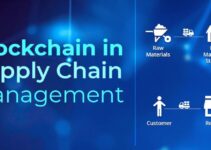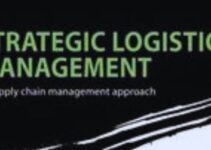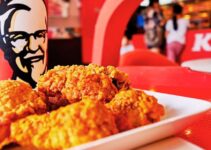Lululemon is a sportswear apparel manufacturing retail chain Canadian multinational company. The company started its sportswear retail chain in 1998. Today, we’ll discuss the value chain analysis of Lululemon supply chain analysis; primary and supporting activities in the process of value chain analysis Example Company. They are inbound and outbound logistics, operations, marketing, and customer service; infrastructure, HRM, technology, and procurement as an application of the value chain analysis process.
Suppliers and Vendors of Lululemon
- Antanova Fashion Corporation
- Brandix Apparel Solution
- Broadpeak SOC Trang
- Chang Wong Industrial
- Chung Jye Shoes
- Cofaco Industries SAC
- Everest Textile
- Far Eastern Dyeining and Finishing
- First Team Vietnam Garments Limited
- Huai An Yuari Tong Headwear Mfg
- Kwong Wai Knitting Limited
- Nantong Jinruite Technological Development
- PT Pungkook Indonesia
The Value chain analysis of Lululemon supply chain analysis would analyze the primary and supporting activities in the process of value chain analysis. They’re inbound and outbound logistics, operations, marketing, and services; infrastructure, HRM, technology, and procurement. Here’s supply chain analysis of Lululemon value chain analysis company example as follows;
Value Chain Analysis of Lululemon
Let’s discuss the primary and supporting activities involved in the process of value chain analysis of Lululemon supply chain analysis. It is an application of value chain analysis based on Porter’s model; some of the key elements and components of value chain analysis are as follows;
Primary Activities of Lululemon
The primary activities are directly involved in the production of products and goods and adding value to the sportswear company. Some of the five main primary activities in the value chain analysis of Lululemon supply chain analysis are as follows;
Inbound Logistics of Lululemon
I-Large Suppliers Network
Lululemon has established a very large supplier network comprising over 90 suppliers and vendors in 20 countries across the world. The large and diverse suppliers network helps the company to ensure the smooth availability of raw materials, components, and other supplies at its production and manufacturing facilities.
II-Material Sourcing Countries
Lululemon sources fabric, nylon, lycra, and other raw materials and supplies from various countries. They’re like Bangladesh, Vietnam, China, and others.
III-Suppliers Code of Conduct
In order to regulate the suppliers and vendors network, Lululemon has setup a clear code of conduct to ensure the ethical and sustainable practices of suppliers. The sportswear brand’s regulations comprise of following elements;
- Standards and regulations for foreign migrant workers
- Acknowledgment certificate
- Vendor code of ethics and benchmark
- Responsible supply chain assessment and analysis
- Performing 452 assessment and analysis of suppliers
Outbound Logistics of Lululemon
I-Transportation & Distribution Channels
Lululemon employs multiple transportation channels for the distribution of its sportswear apparel and products in various retail markets and brand stores worldwide. They are like air travel, ships, and other mediums for distributing sportswear items worldwide.
II-Transparent Supply Chain
Lululemon employs the latest GPRS technology and other advanced tracking systems to track the location of items. It allows the company to track the location of products and goods in real-time; makes sure the timely delivery of products and goods.
Operations of Lululemon
I-Production & Manufacturing Facilities
Lululemon has established a very large network of approximately 138 production and manufacturing factories in over 20 countries across the world. The brand outsources almost all of its apparel production work to the oversee suppliers’ manufacturing factories. Out of 138 manufacturing facilities, Lululemon considers 113 of them to belong to the top tier. The concentration of factories in different countries is as follows;
- Vietnam, 37 factories
- China, 18
- Sri Lanka, 12
- Cambodia, 10
- Indonesia, 7
- Taiwan, 5
- Philippines, USA, and Peru, 4
II-Distribution Centers & Warehouses
Lululemon has roundabout 5 mega-size warehouses and distribution centers in various countries across the world. The sportswear brand has precisely built them in different geographical regions and locations near the brand retail stores and target retail markets. It allows the company to save the transportation and carriage costs and improves delivery timing.
Marketing & Sales of Lululemon
I-Marketing & Advertisement
Lululemon runs various types of marketing and advertisement campaigns for the promotion of its sportswear apparel and other sportswear items. The sportswear brand is highly proactive on various social media platforms like Facebook, Instagram, and others to connect and engage with followers. However, the company also collaborates and partners up with various worlds’ leading celebrities and sports figures; some of them are as follows;
- Addison Rae
- Kendall Jenner
- Megan Markle
- Selena Gomez
II-Retail Store Network
Lululemon has established a very large retail network comprising over 711 stores in various countries across the world. The retail stores allow customers to physically check the quality of sportswear apparel by visiting them before buying. Overall, the retail store improves the customer satisfaction level.
Services of Lululemon
Lululemon offers a wide range of services to customers along with tangible sportswear products and goods. Additional services allow the company to build an exercising community and connect with customers. However, some of the main services of Lululemon are as follows;
- Workout classes
- Online shopping and e-commerce platform
- Home delivery service
- Community engagement
- Yoga classes both free and paid
Supporting Activities of Lululemon
Supporting activities are indirectly involved in the production of products and goods and adding value to the sportswear company. Some of the main supporting activities in the value chain analysis of Lululemon supply chain analysis are as follows;
Infrastructure of Lululemon
Lululemon has established a very large infrastructure of retail chain stores, warehouses and distribution centers, production and manufacturing facilities, and suppliers and distribution networks. Well-developed infrastructure helps the company to smoothly perform its various retail operations and timely deliver sportswear products and goods to the customers.
HRM of Lululemon
Lululemon has employed roundabout 38000 employees to manage its global operations. The human resources management department of the sportswear retail brand plays a key role in building a diverse working environment; promoting innovation and creativity, and offering equal employment opportunities to all regardless of any differences.
Technological Development of Lululemon
Lululemon invests a significant amount of capital resources in research and technological development. It allows the sportswear brand to develop new designs, styles, and find new material for sportswear apparel, and efficient methods of production and distribution. As a result, it helps the company to save costs and resources and develop comfortable products for customers.
Procurement of Lululemon
Lululemon is highly cautious about ethical sourcing and procurement of raw materials, fabric, and supplies for the production of sportswear apparel. The company has developed strict guidelines and standards for suppliers and vendors to ensure compliance with sustainability and human rights standards and regulations.
Conclusion: Lululemon Value Chain Analysis Example Company | Application of Value Chain Analysis Process
After an in-depth study of the value chain analysis of Lululemon; we have realized that Lululemon is the world’s leading retail chain sportswear brand. If you are learning about the Lululemon value chain analysis example company; then you should keep in mind the abovementioned primary and supporting activities. They’re inbound and outbound logistics; operations, marketing and sales, and services; infrastructure, procurement, HRM, and technological development as an application of the value chain analysis process.
Ahsan is an accomplished researcher and has a deep insight in worldly life affairs. He goes Live 3 days a week on various social media platforms. Other than research writing, he’s a very interesting person.


